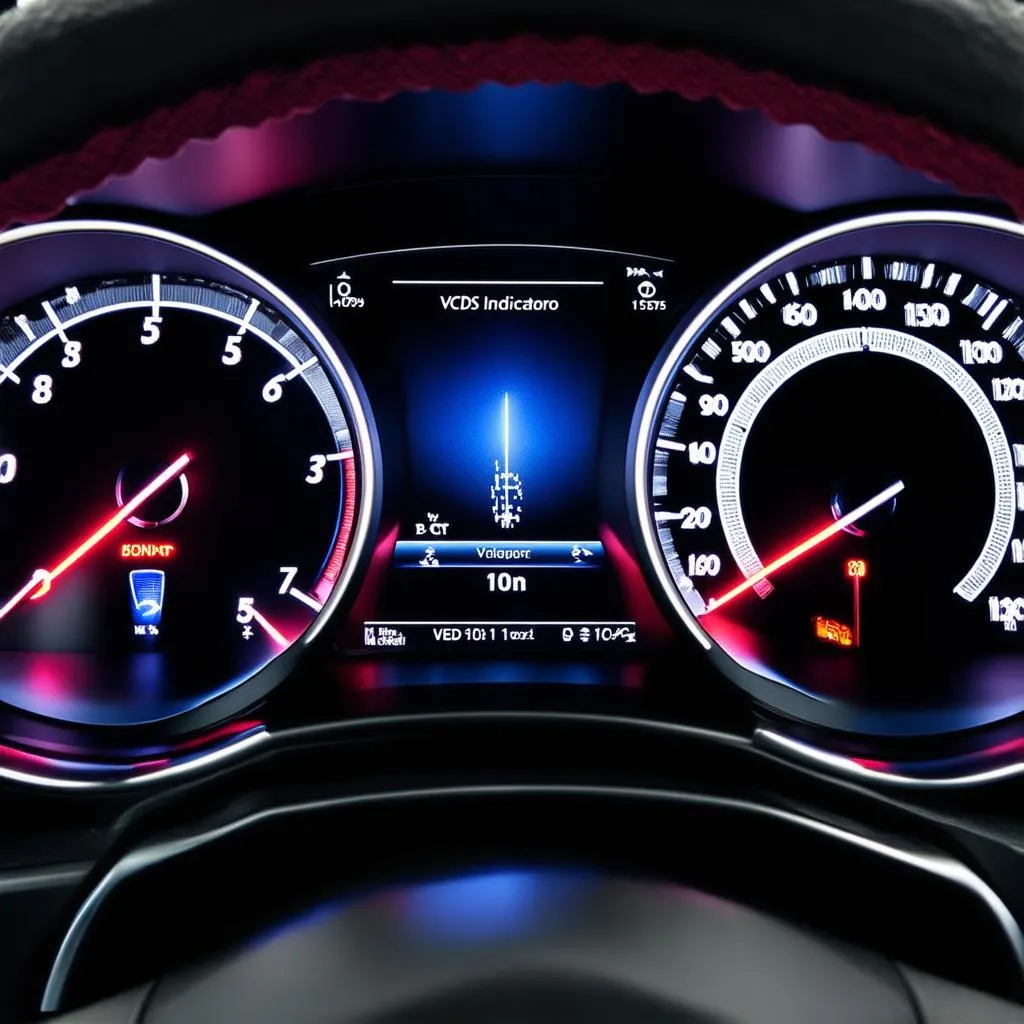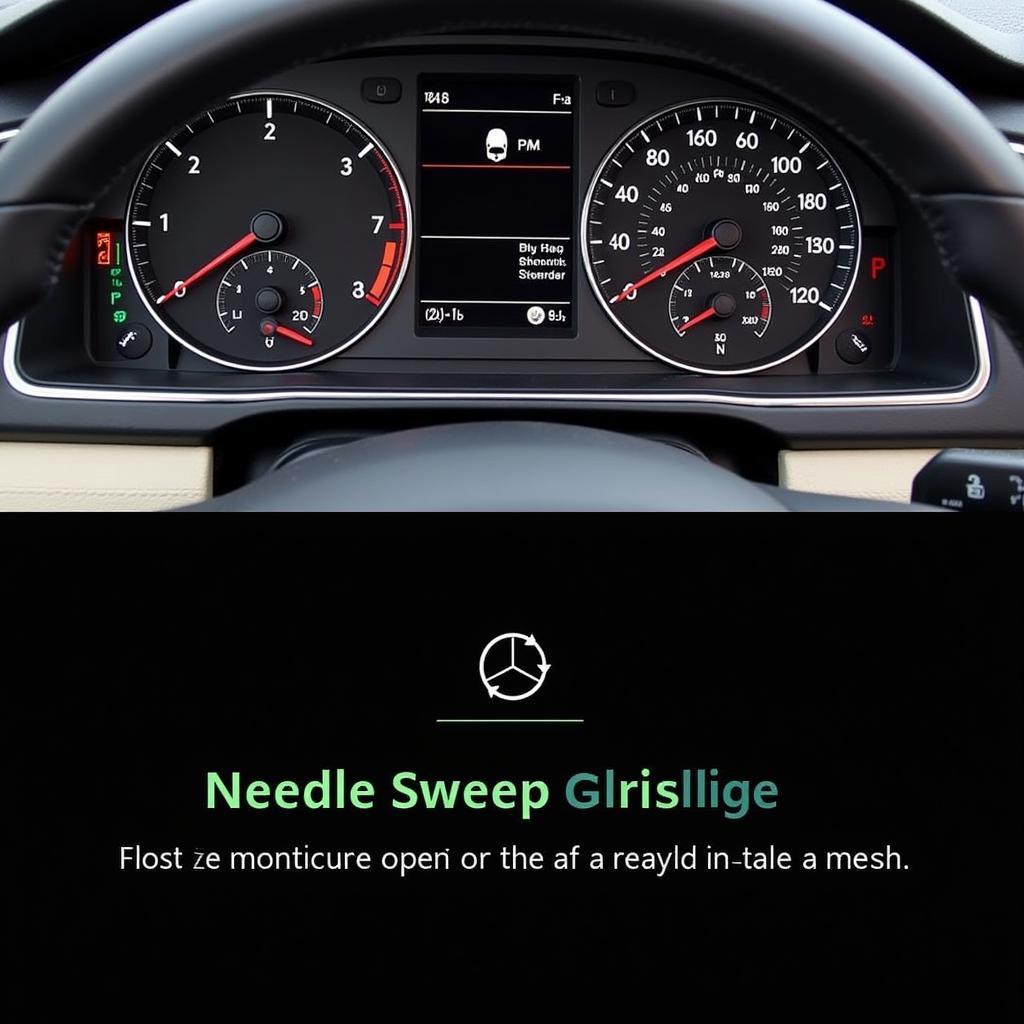The dreaded “check engine” light is a source of anxiety for many car owners. When it illuminates, it often signals a trip to the mechanic and a potentially hefty bill. One common culprit behind this warning light is the P2015 error code, which can be diagnosed using a VCDS (VAG-COM Diagnostic System) tool. This code indicates a problem with the intake manifold runner position sensor/switch circuit on Bank 1 of your engine. Don’t panic just yet, though. This article will break down the P2015 code, explain how it’s diagnosed with a VCDS tool, and guide you through potential solutions.
What Does a P2015 Code Mean?
In modern engines, the intake manifold often features adjustable runners. These runners alter the airflow path to optimize engine performance and fuel efficiency at different speeds. The intake manifold runner position sensor (IMRPS) monitors these runners’ position and reports it to the engine control unit (ECU).
A P2015 code signals that the ECU has detected a problem with the IMRPS circuit on Bank 1, which typically refers to the side of the engine containing cylinder #1. This could mean:
- Incorrect Signal: The sensor is sending the wrong information about the runner position.
- Intermittent Signal: The sensor signal is inconsistent or dropping out.
- Circuit Malfunction: There’s a problem with the electrical circuit, such as wiring issues or a faulty sensor.
Diagnosing P2015 with VCDS
A VCDS tool, like those offered by Cardiagtech, is a powerful diagnostic system for Volkswagen Audi Group (VAG) vehicles. It allows you to read and interpret error codes, perform output tests, and access live data from your car’s various systems.
Here’s how to use a VCDS tool to diagnose a P2015 code:
- Connect the VCDS to your vehicle’s OBD-II port.
- Turn the ignition on but don’t start the engine.
- Launch the VCDS software and select your vehicle model.
- Go to “Select Control Module” and choose “Engine.”
- Select “Fault Codes” to read the stored codes.
- Look for the P2015 code and note any other codes present.
- Clear the codes and then run the engine until the check engine light reappears.
- Read the codes again. If the P2015 code returns, further diagnosis is needed.
The VCDS tool can also display live data from the IMRPS, allowing you to monitor its readings and compare them to expected values.
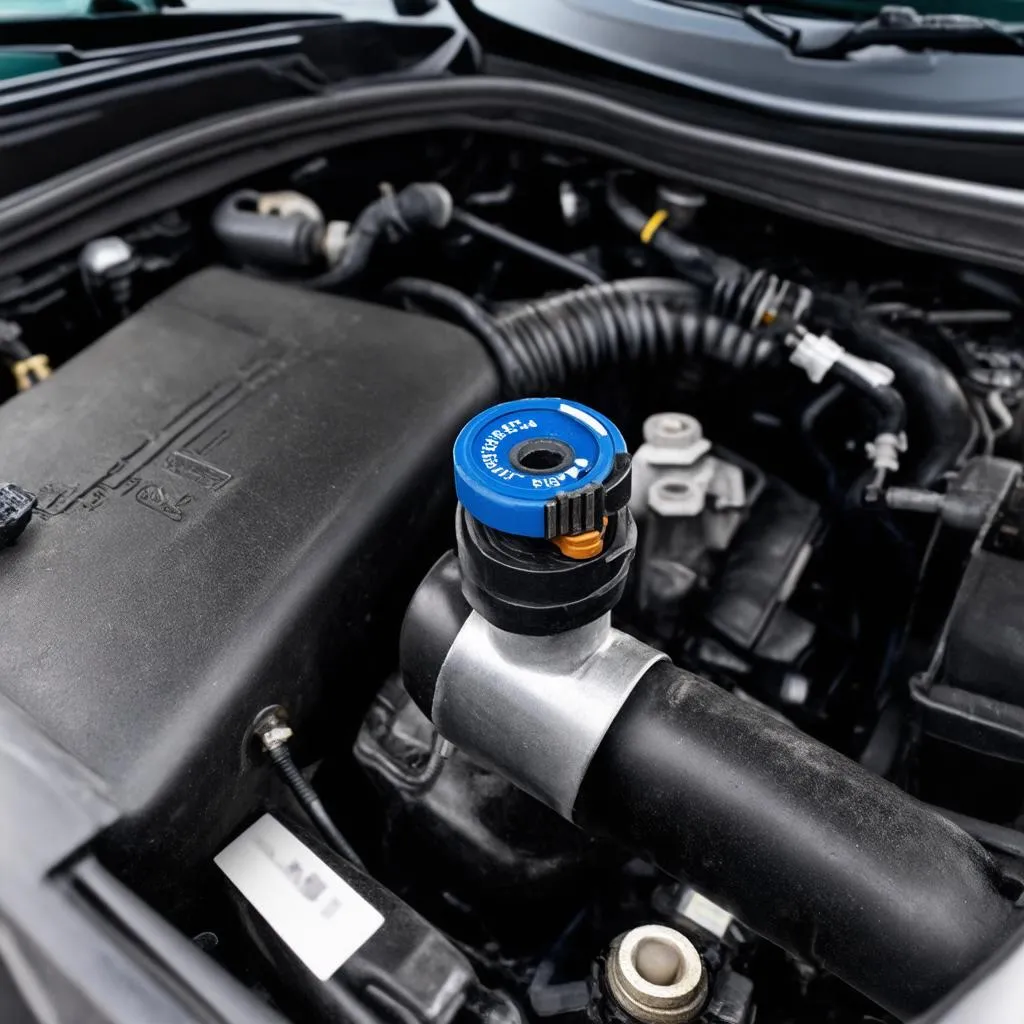 Intake Manifold Runner Position Sensor
Intake Manifold Runner Position Sensor
Common Causes and Solutions for P2015
- Faulty IMRPS: A malfunctioning sensor is a frequent cause. Replacement is typically the most effective solution.
- Wiring Problems: Damaged, corroded, or loose wiring in the IMRPS circuit can disrupt the signal. Inspect the wiring harness for any visible issues.
- Vacuum Leaks: Some intake manifold runners are vacuum-controlled. Leaks in the vacuum lines or the intake manifold itself can disrupt runner operation and trigger the code.
- Carbon Buildup: Excessive carbon buildup in the intake manifold or on the runners can restrict their movement. Cleaning the affected areas may resolve the issue.
- Sticking Intake Manifold Runner: Mechanical wear or carbon buildup can cause the runners to stick. This might require cleaning or replacement of the intake manifold.
FAQs
Can I drive my car with a P2015 code?
It’s generally not advisable to ignore a check engine light. While you might not notice significant drivability issues initially, driving with a P2015 code can lead to reduced fuel economy, decreased performance, and potentially more severe engine problems in the long run.
Can I fix a P2015 code myself?
The complexity of the repair depends on the underlying cause. If you’re comfortable with basic car maintenance, you might be able to handle tasks like inspecting and cleaning the IMRPS or checking for vacuum leaks. However, more involved repairs, such as replacing the sensor or addressing wiring issues, are best left to experienced mechanics or those with advanced DIY skills.
How much does it cost to fix a P2015 code?
The repair cost varies depending on the specific issue, vehicle make and model, and labor rates in your area. A simple sensor replacement could cost a few hundred dollars, while a more complex repair involving the intake manifold could be significantly more expensive. It’s always a good idea to get quotes from multiple mechanics before proceeding with any repairs.
Expert Insights
According to automotive engineer Dr. Emily Carter, author of “Advanced Automotive Diagnostics,” “The P2015 code is a common issue in modern engines, and it’s essential to address it promptly to prevent further damage. Using a professional-grade diagnostic tool like the VCDS can significantly aid in accurate diagnosis and efficient repair.”
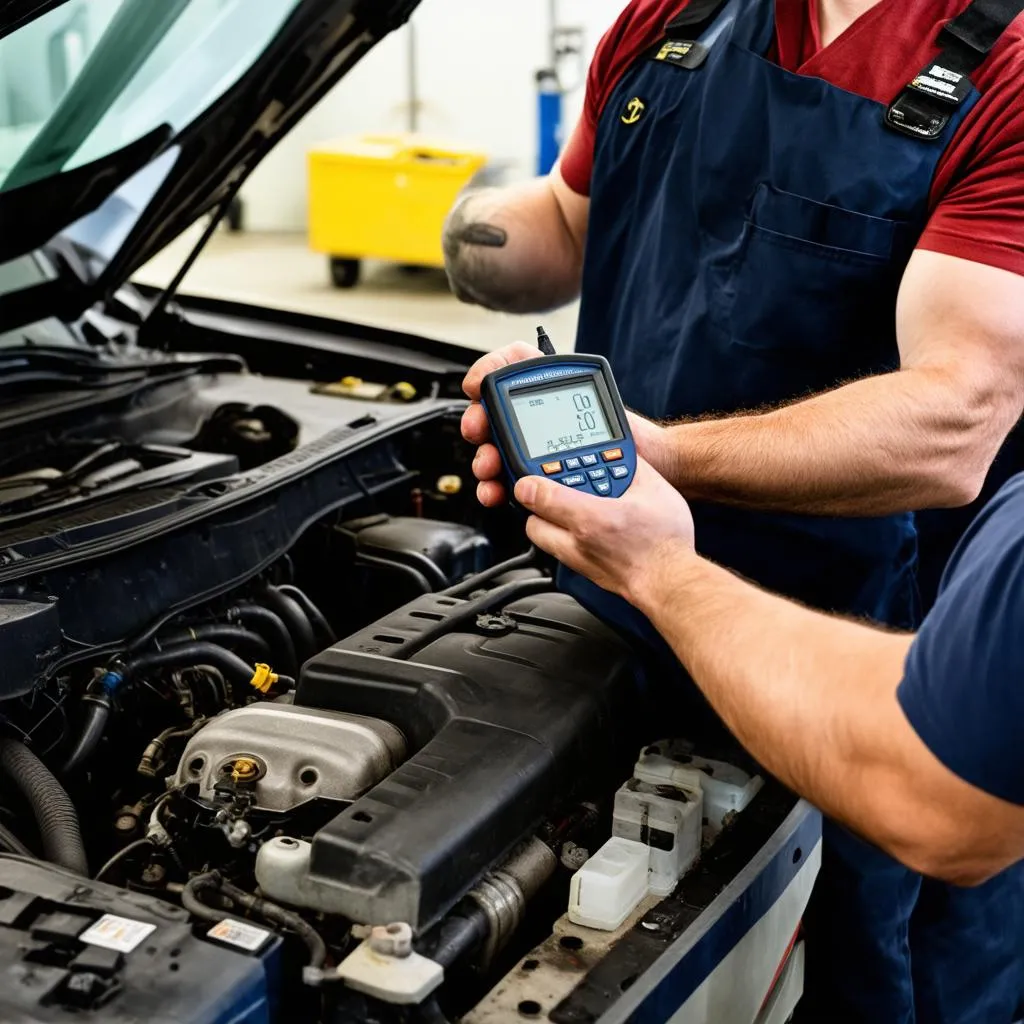 Mechanic Using Diagnostic Tool
Mechanic Using Diagnostic Tool
Conclusion
While encountering a P2015 code can be frustrating, understanding its meaning and using a VCDS tool can simplify the diagnostic process. By addressing the root cause promptly, you can restore your vehicle’s performance, improve fuel efficiency, and avoid potential long-term engine problems. Remember to consult your vehicle’s repair manual or seek professional assistance if you’re unsure about any aspect of the diagnosis or repair process. For high-quality diagnostic tools and expert advice, consider reaching out to CARDIAGTECH for all your automotive needs.
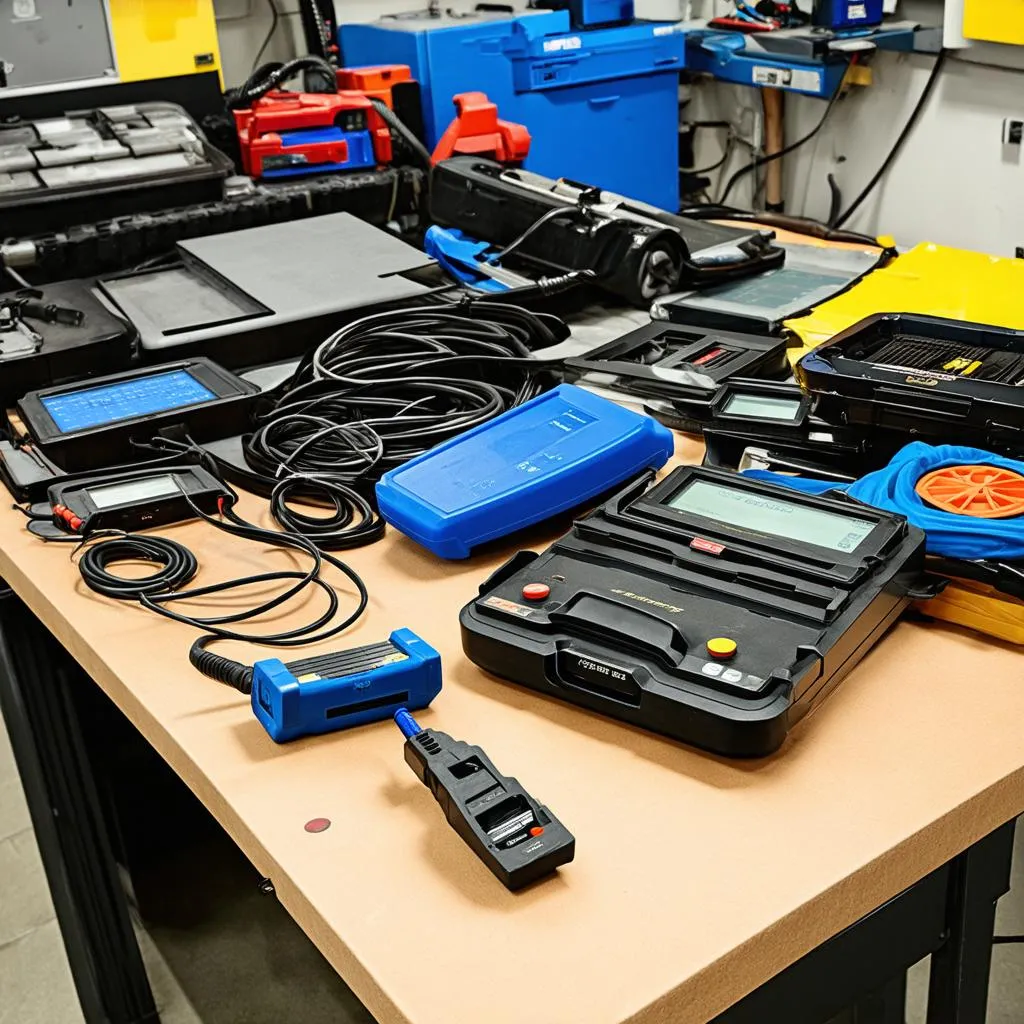 Car Diagnostic Equipment
Car Diagnostic Equipment

